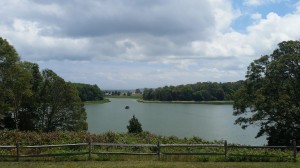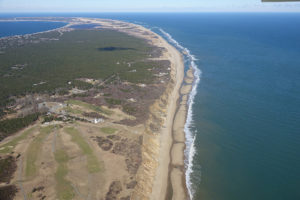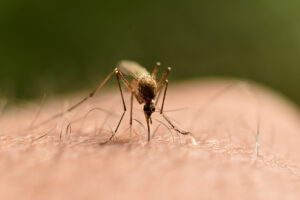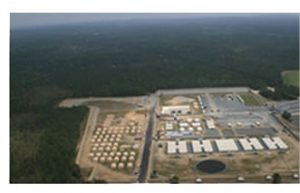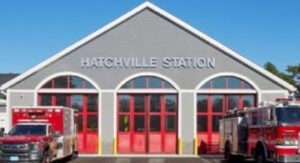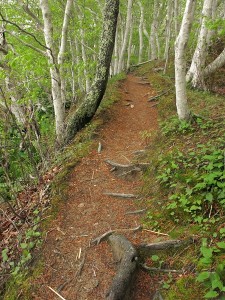 By MATTHEW CANNON
By MATTHEW CANNON
This past winter played havoc on many trees, snapping branches and knocking some over entirely. While interacting with many landowners on the Lower Cape, I have noticed a knee-jerk reaction to want to “clean up the mess” that are fallen limbs and dead trees.
We have some old trees on Cape Cod; many pitch-pines are nearing the end of their lives. As they die off from old age or Mother Nature, many will–at least partly–still stand. Some may fall.
Both standing and fallen dead trees are animal habitat and part of basic life cycles, including the carbon cycle, nitrogen cycle, and phosphorous cycle. Whatever dies, decomposes, and becomes an essential nutrient for the next generation of plants and animals.
I think we need to start looking at nature through a different lens. Dead trees are not an eyesore; they are animal habitat. For example, fallen trees can be great salamander habitat. Standing dead trees provide excellent homes for owls and woodpeckers. Maybe if we had a few more dead trees around we would not have woodpeckers trying to live in our homes!
With that being said, dead trees can be a hazard. I would certainly not advise keeping up dead trees or dangerous limbs where they could do damage to life or property. As a land steward, I need to try to keep trails as clear as they can be from these hazards so people are less likely to be injured. However, we do not cut down dead trees from within our conservation properties. There is simply no point. That tree will be a bird house for several years and then decompose and recycle its nutrients into the ground. The worst thing to do would be to remove that tree from its environment and remove its nutrients from the life cycle.
The other reason I have heard to remove dead trees is for fire hazards. Removing trees or thinning areas for this reason may be appropriate depending on the area’s size and potential risk to other people. For example, the National Seashore thins the forest because they own an uninterrupted swath of land that could carry fire across the entire Outer Cape, and near many residential areas. We should do everything we can to prevent a fire on this scale. However, a few dead trees in our neighborhoods will have little impact on wildfires. Most of our conservation lands are completely contained and segmented by roads. The guidelines known as “Firewise Communities” suggests clearing dead vegetation within 10 feet of your home and removing flammable materials 30 feet from your home.
While creating suburban communities and managing larger forests, we have pretty much nixed the possibility of ravenous wildfires on the Cape. Unless a large swath of trees all die at once, we actually benefit from the trees that die. They provide animal habitat and ensure nutrient recycling for the next generation. If we kept some of these trees up, birds may not be living in our bird boxes, because they would not need to. We could offer a little more nature to nature.
Matthew Cannon is a land steward at the Harwich Conservation Trust and the Chatham Conservation Foundation. He is a graduate of Connecticut College and an AmeriCorps Cape Cod alumnus.









